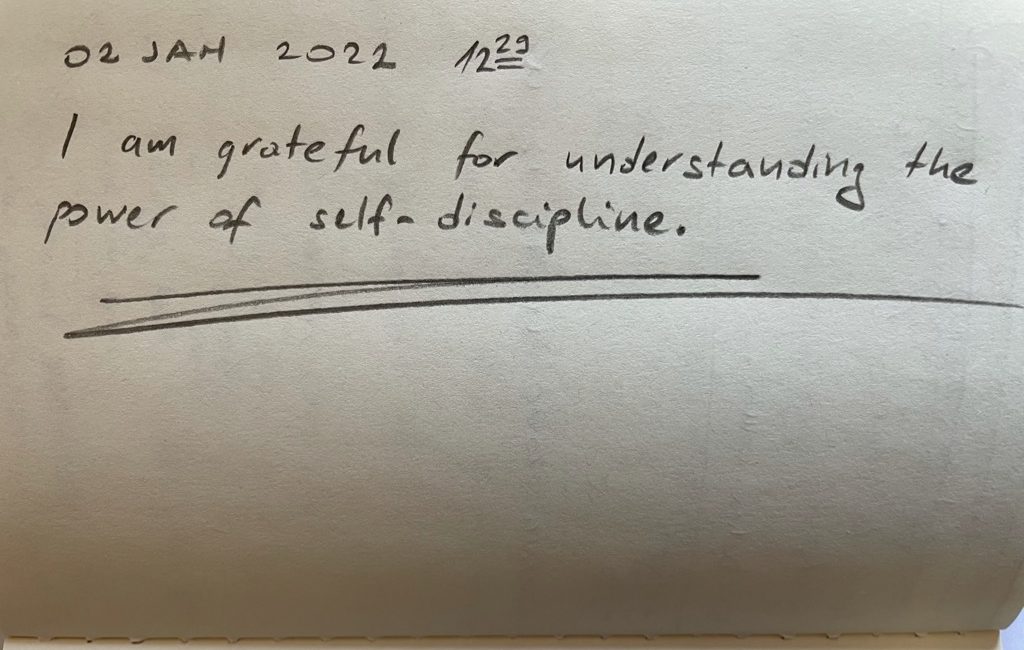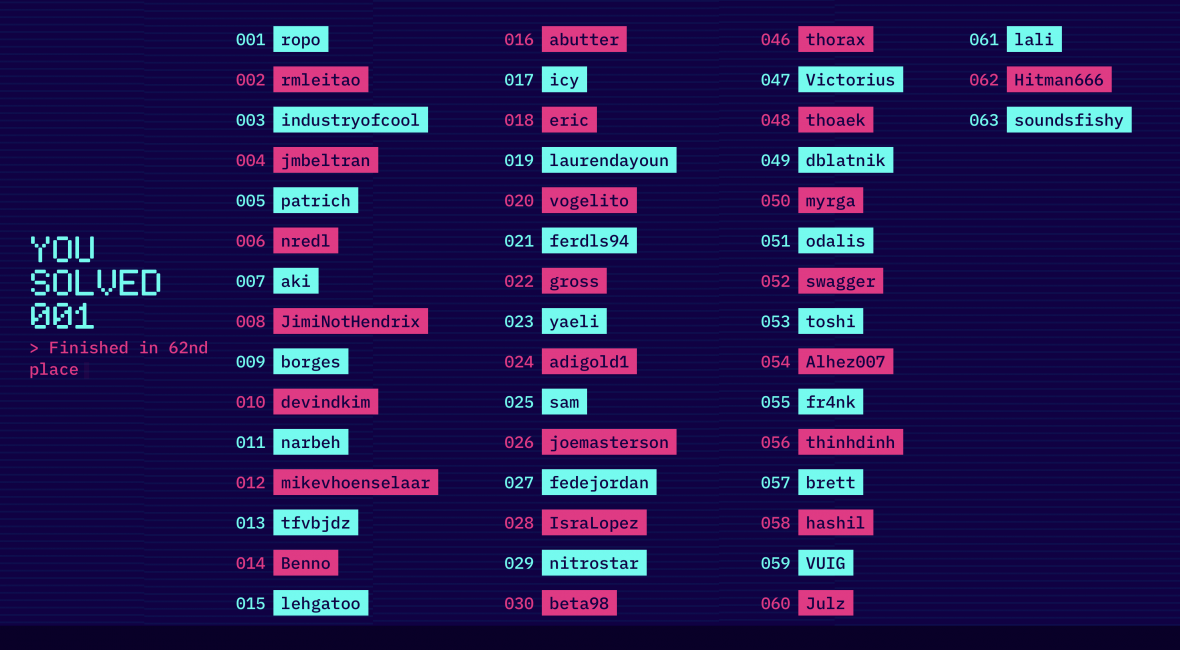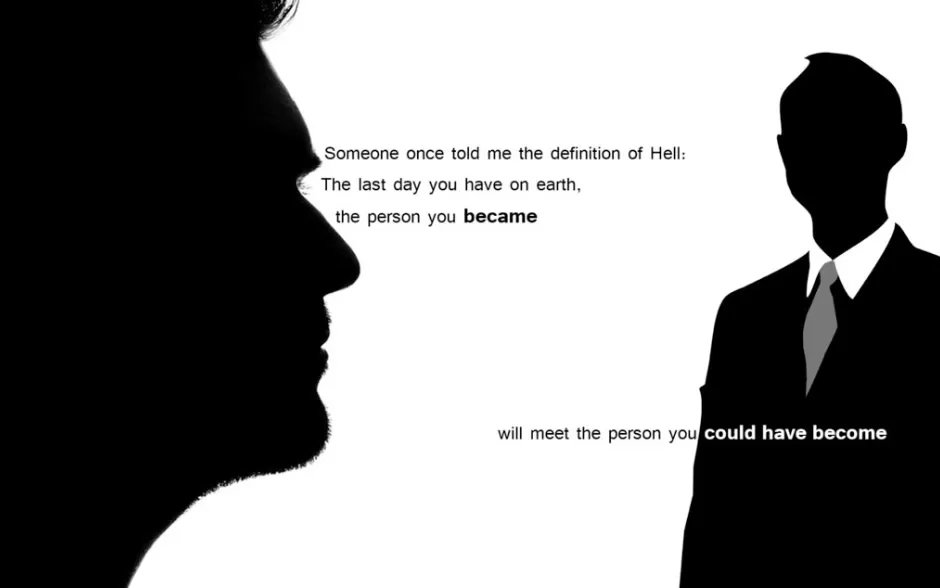What if you devote the first hour of the day to yourself, intentionally trying to improve an aspect of your life that you’ve been putting off for too long?
You can do that by reading, thinking, writing, meditating even. The Miracle Morning book can show you what and how to do it. Personally, the life SAVERS exercise is something I’ve stuck with for years now. Here are some other books that may be of interest to you.
Oh, and btw, if you spend half of that 1-hour on reading, you’ll end up reading 30 books per year (and here’s the math that proves it).
[DT]
We need more games that make us think instead of those that dumb us down. Video games are not bad (in moderation). Boardgames are better. Puzzle games are great.
I used to love hacker challenge games, and recently I stumbled upon one on iOS called 63.
As a testament that I didn’t lose my mojo completely 😏, I finished on the Leader board.
Great game, check it out, and please recommend any other that you may know that’s similar.
Oh, and BTW, because why not, you can get one of the 62 images (I kept one for myself) above as an NFT on OpenSea.
⚠️ In this new “Daily Thoughts” series, I’m just scratching my own itch. For too long now I’ve been reading and consuming. Not that there’s something inherently wrong with that, but if one doesn’t offset that with his own producing, one often falls into the trap of staying a consumer. If you think you know something, or want to learn something about yourself, try to explain it ‘on paper’.
Personally, I think best ‘on paper’, and it’s been a while since a wrote a post. So, I’ll start small (and build up a habit of daily writing again) by sharing a thought daily. I’ll use this as a retrospective a year from now.
Dear readers, feel free to chime in with your thoughts on my thoughts (so Meta; which is popular in its own right these days).
In this new “Daily Thoughts” series, I’m just scratching my own itch. For too long now I’ve been reading and consuming. Not that there’s something inherently wrong with that, but if one doesn’t offset that with his own producing, one often falls into the trap of staying a consumer. If you think you know something, or want to learn something about yourself, try to explain it ‘on paper’.
Personally, I think best ‘on paper’, and it’s been a while since a wrote a post. So, I’ll start small (and build up a habit of daily writing again) by sharing a thought daily. I’ll use this as a retrospective a year from now.
Dear readers, feel free to chime in with your thoughts on my thoughts (so Meta; which is popular in its own right these days).
So, let’s go:
Imagine a world where every individual gives their maximum. Not their neighbors, or their spouses; their own maximum. And imagine everyone competing against the only person they ever truly should strive to surpass – their past self. Would we be better off or worse? Would we solve the problems of today’s world that are screaming at our face, or would we continue to ignore them?
I would like to believe that before we ‘level-up’ as humans, we’ll have to start wanting more from ourselves, and then delivering on that desire.
The gaming industry is changing rapidly, with more users than ever before turning to online games.
Some play games with friends on a console, playing titles such as Call of Duty or Fortnite. Others use gaming to meet new people, whilst some replace activities they used to do at a physical location with a virtual experience, such as going to a casino.
The iGaming market, which incorporates online slots and casinos, saw a significant rise in 2020, courtesy of the pandemic. In Croatia, the iGaming market has increased by more than 300% since the start of the century, with European Gaming estimating it is worth more than €360m (HRK 2.6bn). With GiG moving into the country recently, that means lots of opportunity for online gaming providers, and therefore for those involved in coding and developing such games.
If you are interested in coding for an online provider, there are three fundamental rules to remember. Hopefully, these will give you a good starting point when deciding whether iGaming coding and development is for you.
Regulations
The first thing to remember is that iGaming is heavily regulated worldwide, and you need to understand the country you are coding for, not the one you are coding in. Much of this is around Random Number Generators, RNGs, which operate at the heart of every online casino. Techopedia explains that an RNG is a mathematical construct that generates a number without a discernable pattern, hence being called random. Some countries are strict on how the RNGs work, what information must be displayed on-screen and other requirements. In the United States, a growing market for the iGaming industry, those regulations can vary from state to state.
Design is Key
When online casinos first appeared, they were rather basic designs, focusing on gameplay rather than the user experience. Much of that has changed, especially with such a wide variation of online slots and different games available. The user experience must be smooth and facilitate access to a wide range of games. It must not be chaotic, cluttered or unappealing. In terms of basic design, Gala Bingo displays top titles such as Fiery Wilds and Big Banker on their homepage, with options for users to drill down further into each section for even more titles. Those sections contain many more titles, but if they were displayed on the main screen, it might become too busy to navigate. Also, the design of games has changed over the years, with users expecting a solid visual experience from their gameplay and dynamic sound. All of this is worth considering if you begin to code for a provider – are your skills up to the task?
Bugs
Generally, games released on a console can have a few bugs at launch. Cyberpunk might have bombed because of several problems, but titles such as Fallout 76 survived despite being buggy when they first dropped. In the world of iGaming, those bugs need tracking and dealing with very swiftly. You only need to spend a few minutes perusing online casino review sites to discover that bugs or crashes can destroy a brand quickly. Also, if the bug can be exposed by a cheat or someone looking to make some quick money, rest assured they will find a way. Your code needs to be solid, but those bugs need tracking and dealing with immediately.
For more coding advice, tips and news, be sure to pay regular visits to this blog.
TL;DR
In this post, you’ll learn how to use Vue CLI to build a Vue.js 3 application for searching Giphy’s GIFs by using their API.
Introduction – The War is Over

Let’s be honest; even those of us that actually don’t hate the JavaScript ecosystem can understand the frustration with the fact that new JS frameworks are popping up all the time.
This was especially true some 2-3 years ago. However, it seems that the craziness has settled down a bit and that the war is seemingly over. For now. These top four (top 5 lists are overrated 😉) frameworks established themselves:
I added the number of Github `*’s (at the time of this writing), but I don’t want you to read into that too much 🤗
Analysis paralysis will, well, paralyze you!
You could argue that there are other options like Ember, Mithril, or good ‘ol jQuery even! However, this tweet says it all:
Developers are fighting over which frontend framework is better.. it’s not like users know or care. They mostly care about the User Experience. UX should be our focus on the frontend.
Personally, I stuck to the Angular bandwagon ever since version 1.0, but that started losing it’s ooomph after version 2.
I believe that Vue.js (due to its progressive and flexible nature) is a perfect fit for the teams that have to rewrite old codebases one step at a time. However, you can also use it as a full-blown framework if you wish.
Personally, React’s JSX just seems wrong, and some people, smarter than me, swear by that being TheRightWay™, and I guess we’re not here to discuss tastes…
General’ framework war’ kind of questions I tend to answer in the following way:
Please just stop with the analysis paralysis already.
Do your research, pick a framework (any framework for that matter) that the community is using, use it, and see how far it gets you.
All these talks about X being slow or Y being better just make no sense until you try it yourself for your use case and preference.
Besides, nowadays the speed will not be a deciding factor among the top JS frameworks.
With all this out of the way, fasten your seatbelts, take a venti (or trenta) sized cup of coffee, and let’s go do something practical! 💪
If you care about the hardcore metrics ⏱️ and want to check out some detailed comparisons between popular frontend frameworks, here are a few blog posts.
The Demo App
As said in the intro, we’ll build an application for searching (and showing) Giphy GIFs by using their API.
You can fork the complete source code on Github.
I’m using Vue.js 3, and I’ll be referring to it as just Vue.js in the rest of this post.
Prerequisites
Make sure that you have the following tools installed:
- Node.js – here’s a free but outdated step by step guide/book for both Windows and Mac. Or, really, just go to the main website and download the executable for your machine
- Git – here’s a fun getting started tutorial in case you’re new to it
Vue CLI
As their docs say:
Vue CLI aims to be the standard tooling baseline for the Vue ecosystem. It ensures the various build tools work smoothly together with sensible defaults so you can focus on writing your app instead of spending days wrangling with configurations. At the same time, it still offers the flexibility to tweak the config of each tool without the need for ejecting.
To install Vue CLI, run the following command (in your Terminal):
npm install -g @vue/cli
You can confirm that the installation went well if you run vue and get an output with usage information.
⚠️ Just for reference (in case you follow this tutorial at a later stage and something is not the same as I output it here), my version (get the output by running
vue --versionin your Terminal) as of this writing is@vue/cli 4.5.12.
Start a new app with Vue CLI
We’ll call our app, originally 🙈, giphy-search. So, to start a new app using Vue CLI, run:
vue create giphy-search
Make sure you select the option ❯ Default (Vue 3 Preview) ([Vue 3] babel, eslint) and press ENTER.
You should get an output similar to this:
Vue CLI v4.5.12
✨ Creating project in /Users/nikola/DEV/BLOG/giphy-search.
🗃 Initializing git repository...
⚙️ Installing CLI plugins. This might take a while...
🚀 Invoking generators...
📦 Installing additional dependencies...
📄 Generating README.md...
🎉 Successfully created project giphy-search.
After this command finishes, let’s cd into the project and run it:
cd giphy-search
npm run serve
You should get this output:
DONE Compiled successfully in 3178ms
App running at:
- Local: http://localhost:8080/
- Network: http://192.168.8.189:8080/
Note that the development build is not optimized.
To create a production build, run npm run build.
You should see the following page in your browser if you open http://localhost:8080.

Folder structure
Now, let’s open this project in the editor of your choice (I’m using Visual Studio Code), and you should see something like this:

This is an introduction tutorial, to get you running fast, so I won’t be going into any specific details and will be only focusing on the src folder.
Add content
OK, so let’s add something to our app.
But, where to start? 🤔
Well, one of the first things I do when I come to a project for the first time is to look at the generated output. Then I try to find the strings corresponding to that output within the source code.
So, if you search for the string Welcome to Your Vue.js App, you’ll see the string is within the App.vue file. This file contains the following code:
<template>
<img alt="Vue logo" src="./assets/logo.png">
<HelloWorld msg="Welcome to Your Vue.js App"/>
</template>
<script>
import HelloWorld from './components/HelloWorld.vue'
export default {
name: 'App',
components: {
HelloWorld
}
}
</script>
<style>
#app {
font-family: Avenir, Helvetica, Arial, sans-serif;
-webkit-font-smoothing: antialiased;
-moz-osx-font-smoothing: grayscale;
text-align: center;
color: #2c3e50;
margin-top: 60px;
}
</style>
Without knowing much about Vue.js, you can see where you would change the Welcome to Your Vue.js App text. So, let’s change that to Welcome to GiphySearch. While you do that, also remove the contents of the style tag.
In the App.vue file, we have a template tag that contains a standard HTML img tag and an HelloWorld tag, which is a so-called component. Here’s the link to the documentation where you can learn more about components.
Add an input and a button
Our basic application should have one input field and one button.
To do this, adjust the template in the HelloWorld.vue file to contain only this:
<div class="hello">
<h1>{{ msg }}</h1>
<input name="search" />
<button>Search</button>
</div>
Actions
Having a simple search input field and a button doesn’t do much. We want to click the button, and we want to output something to the console just to verify it’s working correctly.
So, this is how you define a function that will handle a button click in Vue.js:
<button @click="performSearch">Search</button>
But, if you open your DevTools now and click the Search button, you’ll get an error like:
runtime-core.esm-bundler.js?5c40:38 [Vue warn]: Unhandled error during execution of native event handler
at <HelloWorld msg="Welcome to GiphySearch" >
at <App>
warn @ runtime-core.esm-bundler.js?5c40:38
logError @ runtime-core.esm-bundler.js?5c40:211
handleError @ runtime-core.esm-bundler.js?5c40:203
callWithErrorHandling @ runtime-core.esm-bundler.js?5c40:157
callWithAsyncErrorHandling @ runtime-core.esm-bundler.js?5c40:163
invoker @ runtime-dom.esm-bundler.js?830f:327
runtime-core.esm-bundler.js?5c40:217 Uncaught TypeError: _ctx.performSearch is not a function
at Object.onClick._cache.<computed>._cache.<computed> (HelloWorld.vue?fdab:6)
at callWithErrorHandling (runtime-core.esm-bundler.js?5c40:154)
at callWithAsyncErrorHandling (runtime-core.esm-bundler.js?5c40:163)
at HTMLButtonElement.invoker (runtime-dom.esm-bundler.js?830f:327)
That’s because we haven’t defined the performSearch function anywhere.
Let’s do that now. In the HelloWorld.vue file, add the following function definition inside the script tag, methods object property:
<script>
export default {
name: 'HelloWorld',
props: {
msg: String
},
methods: {
performSearch() {
console.log('clicked');
}
}
};
</script>
We defined the performSearch function, which doesn’t accept any parameters and it doesn’t return anything. It just outputs clicked in the console.
Gather input
What if we would like to output (to the console) the string that someone typed in the input field?
Well, first we need to add a new attribute to the input field:
<input name="title" v-model="searchTerm">
The v-model is a directive that instructs Vue.js to bind the input to the new searchTerm variable.
Finally, change the performSearch function to this:
performSearch: function() {
console.log(this.searchTerm);
}
Technically, you could write this a bit differently, passing the
searchTermvariable into theperformSearchfunction as a parameter:performSearch: function(searchTerm) { console.log(searchTerm); } <button @click="performSearch(searchTerm)">Search</button> I'd love to hear from you in the comments which approach is better in your opinion.
Giphy search API
Finally, we come to the cool part 🥶, and that is to fetch some data from the Giphy API and show it in our app.
How do we get this API? Well, if you do a simple Google search for giphy api and open the first link, you’ll get the documentation for their API.
You need to follow these instructions to create an account (and an app) to get an API key. You don’t need an SDK solution at this point (you may want to go that route if you’re going to make a mobile app that shows these images).
After you obtain your API key through their dashboard, you’re going to be able to make search (they offer a bunch more) API requests through their API explorer.
An API URL (obviously, with the fake API key) may look like this: https://api.giphy.com/v1/gifs/search?api_key=AbC&q=cats&limit=10&offset=0&rating=g&lang=en
Great, now we see what kind of a request we need to create to search Giphy’s GIF database for a certain term.
If you open this link in the browser, you’ll see that the service returns something like:

In the next section, we’ll cover retrieving this data within our app.
⚠️ Since Giphy’s rules now require you to add attribution, make sure you add it. I added the image in the footer with a link to their docs.
Vue.js HTTP requests
We have several options for making HTTP requests in Vue.js, and some may see this flexibility as a pro, and some may see it as a con. Either way, for more options, check out this post.
I chose to go with Axios, as it’s a very popular JavaScript library for making HTTP requests. It’s an HTTP client that makes use of the modern Promises API by default (instead of the not so nice JavaScript callbacks 🙂) and runs on both the client and the server (i.e., Node.js).
In your Terminal enter the following command to install Axios via npm:
npm install axios --save
Import Axios in the HelloWorld.vue file just after the script tag:
import axios from "axios";
The performSearch function should now look like this:
let API_KEY = 'getYourOwn';
let link = `https://api.giphy.com/v1/gifs/search?api_key=${API_KEY}&limit=25&offset=0&rating=g&lang=en&q=`;
let apiLink = link + this.searchTerm;
axios
.get(apiLink)
.then((response) => {
console.log(response);
})
.catch((error) => {
console.log(error);
});
Just for reference, to put it all in one listing, the contents of the HelloWorld.vue file should be:
<template>
<div class="hello">
<h1>{{ msg }}</h1>
<input name="search" v-model="searchTerm" />
<button @click="performSearch()">Search</button>
</div>
<a href="https://developers.giphy.com/docs/api#quick-start-guide">
<img src="giphy.png" alt="" class="giphyAttribution" />
</a>
</template>
If you run the app and enter something in the input box, and then click the search button, you’ll see something like this in your console log:

You can see that we’re getting an object that in its data property has another data property (so meta 😎) that’s an array with 25 objects, which holds the information about the images we’ll show in our app.
Well, after a tongue twister in the previous sentence, this is all great, but we don’t want to be logging our objects to the console; we want to show them in our app! 🙂
To show the GIF, you can choose any of the properties under the images object, and use the url property. I used fixed_height_small in my example.
We don’t want to just show one image but all of the images. We can use the v-for directive for that:
<img v-for="g in giphies" :key="g.id" :src="g.images.fixed_height_small.url" />
For reference, here’s the full listing of HelloWorld.vue file:
<template>
<div class="hello">
<h1>{{ msg }}</h1>
<input name="search" v-model="searchTerm" />
<button @click="performSearch()">Search</button>
<img v-for="g in giphies" :key="g.id" :src="g.images.fixed_height_small.url" />
</div>
<a href="https://developers.giphy.com/docs/api#quick-start-guide">
<img src="giphy.png" alt="" class="giphyAttribution" />
</a>
</template>
B e a utiful
At this point, if we take a look at the app and search, for example, for ‘cat coding’ we’ll get this:

Although the result doesn’t look sleek (ha!, far from it 😳), our code does exactly what it’s supposed to do. If you want it to look nicer, feel free to add more CSS.
Bulma is a cool framework that I used in the JWT authentication in an Angular application with a Go backend post in case you’re interested in taking a look.
Conclusion
In this tutorial, you learned how to get started with using Vue.js 3 by building an application for searching Giphy’s GIFs by using their API.
Please leave any comments and feedback in the discussion section below, and thank you for reading!
TL;DR
In this post, I’m sharing my ultimate list of books on the topics of leadership, personal improvement, goals, finance, purpose, and programming.
!TL;DR
The book to read is not the one that thinks for you but the one which makes you think.
~ H. Lee
As it usually goes with people that read, you’re often asked to share “a few good books”.
I already wrote about the top 5 that are, IMHO, worth re-reading every once in a while, in the post Too many books, not enough time.
However, this time I’m sharing my ultimate list of books on the topics of leadership, personal improvement, goals, finance, purpose, and programming. Each and every one of these books helped me move the needle a bit forward, so I hope they’ll do the same for you.
I didn’t list any fictional books here, but if you want one, then look no further than The Name of The Wind.
Leadership
- Leadership and Self-Deception
- The First-Time Manager
- Leading snowflakes
- Radical Candor
- The Manager’s Path
- The Five Dysfunctions of a Team
- The Leadership Handbook
- Leaders eat last
- Start with Why
Personal improvement for leadership
- The Coaching Habit
- How To Win Friends and Influence People
- The 7 Habits of Highly Effective People
- Speak to Win
- Time Management Made Simple
- The ONE Thing
Personal improvement in general
- The miracle morning
- Mindset
- Can’t Hurt Me
- Make Your Bed
- Discipline Equals Freedom
- The 5 Second Rule
- So Good They Can’t Ignore You
Have goals and think big
Purpose
- How Will You Measure Your Life
- The Monk Who Sold His Ferrari
- The Road Less Traveled
- The four agreements
Finance
- Rich Dad Poor Dad
- Think and Grow Rich
- The Greatest Salesman in the World
- The Science of Getting Rich
Programming
Conclusion
This list may seem daunting, but then again, please remember that if you only read 25 minutes per day, you’ll read 30 books per year.
If you think I should add another one to this list, please let me know in the comments.
Recent posts
Categories
- Android (3)
- Books (114)
- Programming (22)
- CodeProject (36)
- Daily Thoughts (78)
- Go (3)
- iOS (5)
- JavaScript (128)
- Leadership (1)
- Meetups (8)
- Miscellaneou$ (78)
- Breaking News (8)
- CodeSchool (2)
- Hacker Games (3)
- Pluralsight (7)
- Projects (2)
- Sublime Text (2)
- PHP (6)
- Quick tips (41)
- Servers (8)
- Stack Overflow (81)
- Unity3D (9)
- Windows (8)
- Wordpress (2)











